Are you looking to spruce up your Tennessee garden? Although the prickly pear cactus is the only species native to Tennessee, many cacti are cold-hardy and can flourish in your garden or patio. This article will go over ten cacti that can survive cold weather.
Plant hardiness level describes a plant’s ability to survive difficult growing conditions. For example, Tennessee’s hardiness zone is 6a-7b. Therefore, you must find cacti that can survive in these conditions.
Various cacti species can grow well in Tennessee, whether you want to create a prickly paradise in your backyard or add some spiky charm to your windowsill. Cacti require minimal watering and come in striking shapes and vibrant colors, making them an excellent choice for low-maintenance gardening that can add a unique desert touch to your home or garden.
1. Eastern Prickly Pear (Opuntia humifusa)
The eastern prickly pear is a hardy cactus that can survive in some of the coldest weather. This species of cacti can grow in hardiness zones of 4 to 9. It is native to the Eastern United States, northeastern Mexico, and Mississippi, but with its hardiness level, it can grow in most of Tennessee’s counties.
This cactus is a low-growing, clump-forming succulent shrub with round purplish green pads. Needle-like spines cover each pad, along with reddish-brown bristles that add to its unique appearance. It has flowers that bloom in late spring, and each shrub has about 8 to 12 bright yellow to gold waxy flowers, with some flowers having a red center.
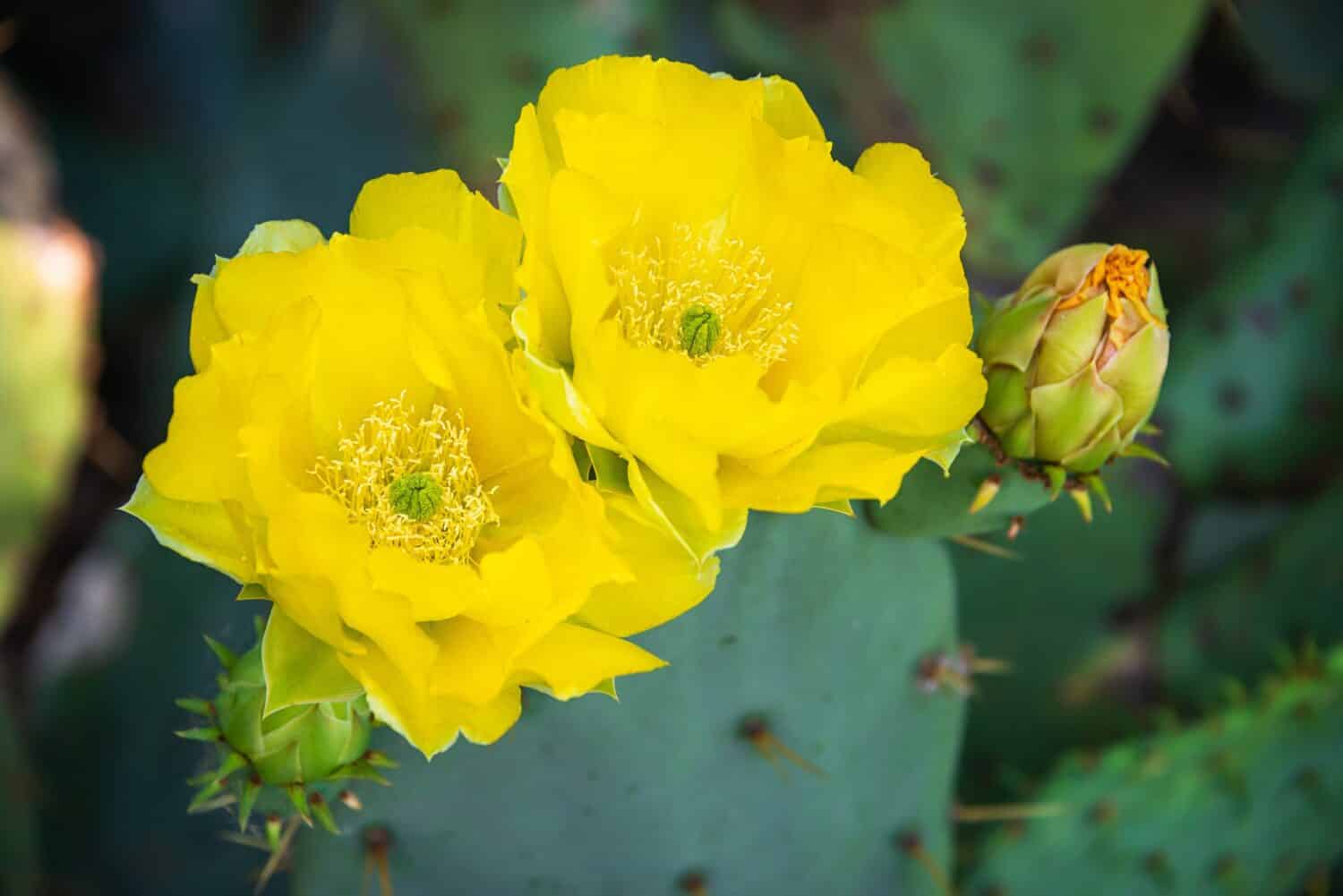
The eastern prickly pear has gold waxy flowers blooming in late spring.
©Leena Robinson/Shutterstock.com
2. Old Lady Cactus (Mammillaria hahniana)
The old lady cactus is native to Mexico, but some report that this species has grown in weather as low as 14°F. So it can grow in most Tennessee counties, but you must take extra measures to protect the cacti during frost.
The old lady cactus is small with clustered stems. They have sharp spines and white bristles, making them look beautiful while keeping them safe from animal or weather damage. It has red to pink flowers that grow in a circle completely around the cactus. This cactus also grows red, edible fruits that taste sweet and tangy, similar to strawberries.
Although this cactus can survive frosty weather, it does better in high-climate zones. If your area tends to frost, it would be ideal for growing your cactus indoors or taking precautions to protect your cacti. You can protect them by ensuring they have good sunlight during the day and using frost cloths.
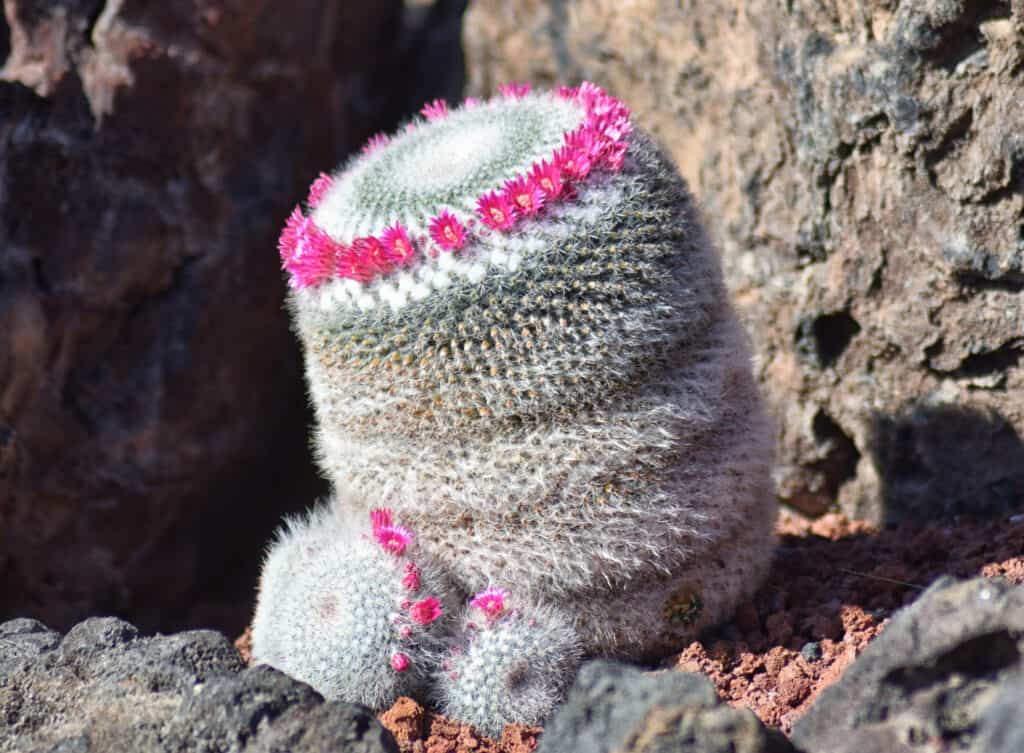
The old lady cactus needs frost cloths during the winter to protect them.
©iStock.com/Ian Lycett-King
3. Missouri Foxtail Cactus (Escobaria missouriensis)
Native to many places in the United States, including Arizona, North Dakota, New Mexico, Idaho, and Kansas, the Missouri foxtail cactus has a hardiness zone of 7 to 11. This cactus can survive and thrive in almost all counties of Tennessee. This species prefers well-drained soil but avoids overwatering them during the winter.
The Missouri foxtail cactus is small, with round-shaped stems covered in areoles. Each areole has 10 to 20 spines sticking out of them. The spines can be white, gray, or tan and become darker as they age. The flowers on this cactus bloom in late spring and are yellow to green in color with pink or brown stripes.

The Missouri foxtail cactus has gray, white, or tan spines.
©Cpifbg13/Shutterstock.com
4. Grand Mesa Peach (Opuntia rhodantha)
The grand mesa peach is a low-growing cactus that does very well in cold weather. It can live through temperatures as low as -20 degrees Fahrenheit. They can get up to 2 inches tall and 3 inches wide and are an excellent option for an outdoor or indoor plant with their resilience to cold and compact build.
The grand mesa peach is very prickly, and its bristles are sharp. These bristles, called Glochids, detach quickly and can pierce your skin, so take caution when handling them. This cactus has beautiful pink or apricot-colored flowers that bloom in late spring to early summer.

The grand mesa peach has Glochids that can detach very easily.
©Gennady Grechishkin/Shutterstock.com
5. Nylon Hedgehog Cactus (Echinocereus viridiflorus)
The nylon hedgehog cactus is a species of cacti native to many places in the United States, including South Dakota, Texas, Kansas, Oklahoma, Wyoming, and Mexico. It has a hardiness zone of 6 to 11, so it can grow in weather as cold as -5 degrees Fahrenheit. They thrive in Tennessee with well-draining soil.
This beautiful, unbranching cactus can grow as high as 12 inches with a width of 3.6 inches. The body is bright green with areoles bearing yellow, white, red, or purplish spines, sometimes with darker tips. It produces stunning red, yellow, brown, or green flowers that bloom in spring.
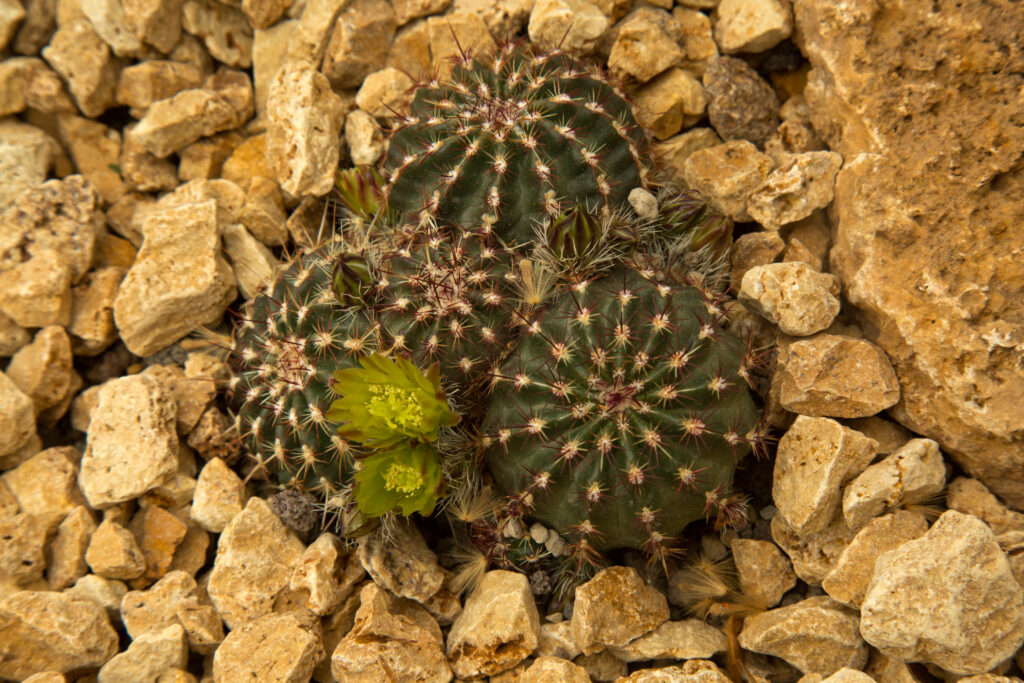
The nylon
hedgehog
cactus can develop bright green groups of limbs.
©Podolnaya Elena/Shutterstock.com
6. Scarlet Hedgehog Cactus (Echinocereus coccineus)
The scarlet hedgehog cactus is native to Northern and Central America but is a cold hardy cactus, which is ideal for most counties of Tennessee. It can reach up to 24 inches high and 18 inches wide when it matures. To allow this cactus to thrive, it needs mineral-rich, well-draining soil.
This is a small clumping species of cacti with barrel-shaped, dark green stems. The spines are yellow, but with maturity, they turn grey. The scarlet hedgehog cactus has beautiful scarlet, pink, or orange long-lasting flowers with rounded petals blooming mid to late spring.
If you want to protect your garden, this cactus can be a good option because its powerful smell can keep deer and rabbits away. In addition, they have lovely flowers that give off a pleasant scent and can draw in birds and bees, especially hummingbirds. This makes them practical and pleasing to the eye, adding functionality and beauty to your outdoor area.

The scarlet hedgehog cactus can deter deer and rabbits, while they attract bees and butterflies.
©iStock.com/jherse16
7. Beehive Cactus (Escobaria vivipara)
Native to North America, the beehive cactus has a hardiness zone of 4 to 10. This cactus does well in cold weather and can flourish in Tennessee landscapes. This species of cacti can grow up to 6 inches tall and 4.4 inches wide.
This globe-shaped cactus grows in low clusters of 20 or more stems. It has up to 40 white radical spines with up to 12 central spines that are darker in color. The beehive cactus has pink or magenta-colored funnel-shaped flowers with green fruit that slowly turns dull brownish red.
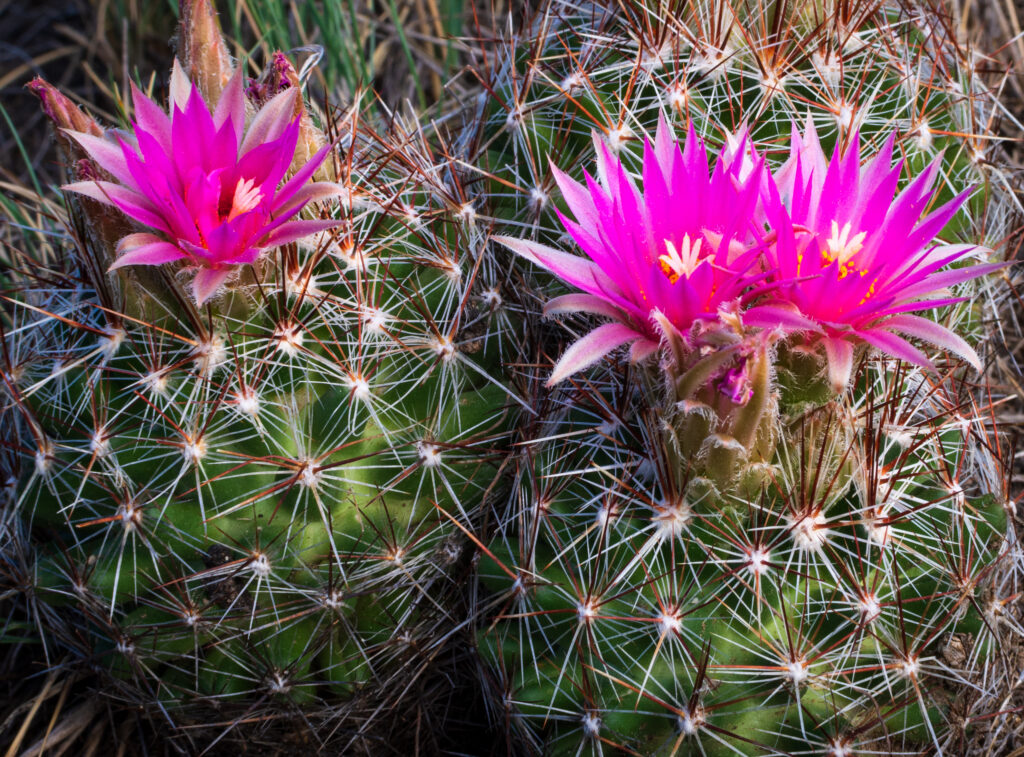
The flowers on the beehive cactus are striking pink and funnel-shaped.
©BT Images/Shutterstock.com
8. Brittle Prickly Pear Cactus (Opuntia fragilis)
The brittle prickly pear cactus is a spiny cactus native to California and Western North America, and you can also find them in many providences of Canada. Its hardiness zone is 4 to 11, so it can survive in cold weather. This cactus can grow up to 6 inches tall and 9 inches wide when it matures.
The brittle prickly pear cactus has fleshy pads with spines up to 1 inch long, often longer than the pads. It grows in clusters of 3 to 8 with beautiful yellow flowers. The flowers can be red at the base with white or yellow stamens and yellow tips in the center.
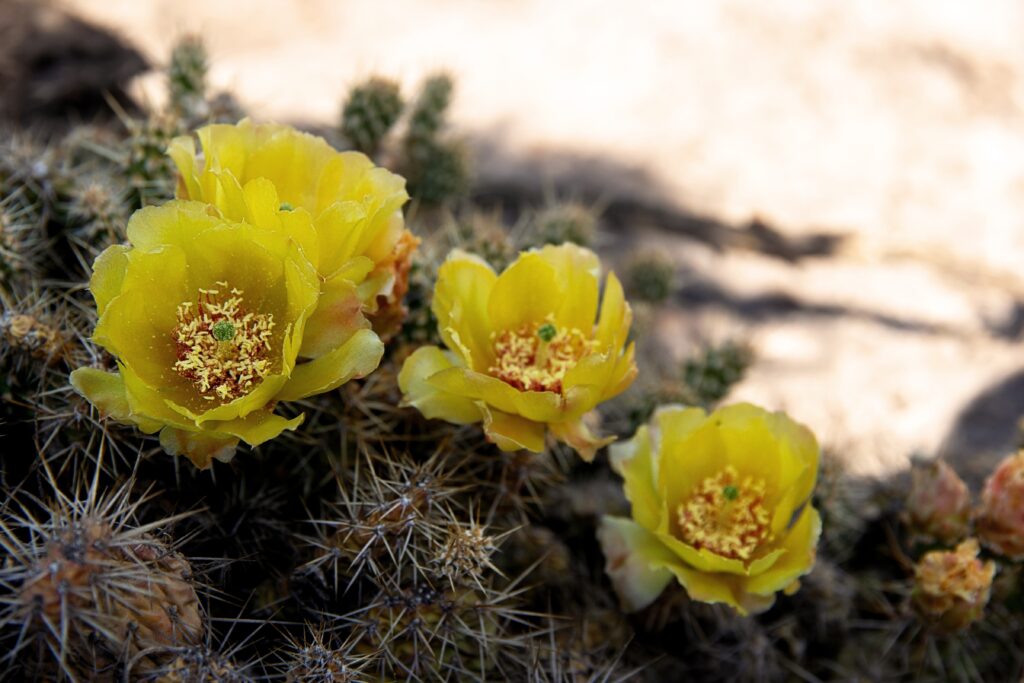
Brittle prickly pear cacti will produce beautiful yellow flowers in the summer.
©Saeedatun/Shutterstock.com
Final Thoughts
Even though cacti are not native to Tennessee, plenty of cold-hardy cacti can survive and thrive in the state’s hardiness zones of 6a to 7b. From the eastern prickly pear to the scarlet hedgehog cactus, there are many options to give your garden or patio a spiky touch.
Just be sure to take precautions to protect your cacti during frost, such as bringing them indoors or using frost cloths. With well-draining soil and plenty of sunlight, these cacti can add a unique and beautiful element to your Tennessee landscape.
The photo featured at the top of this post is © Mon_camera/Shutterstock.com
Thank you for reading! Have some feedback for us? Contact the AZ Animals editorial team.






